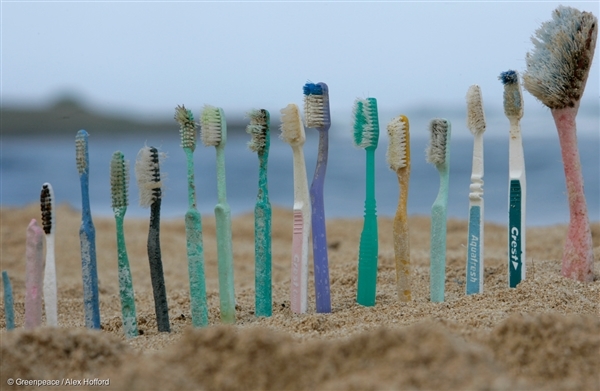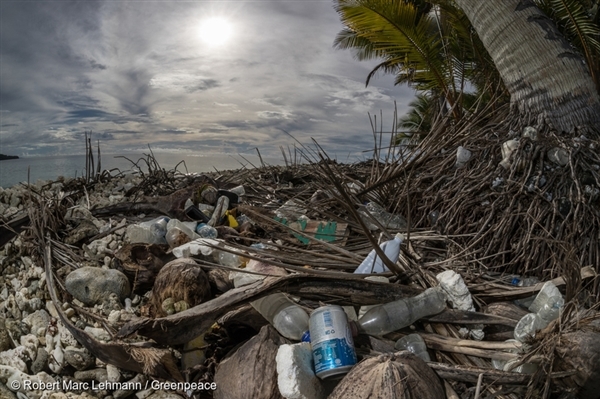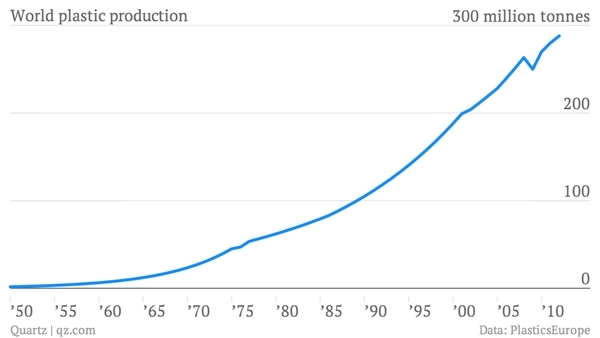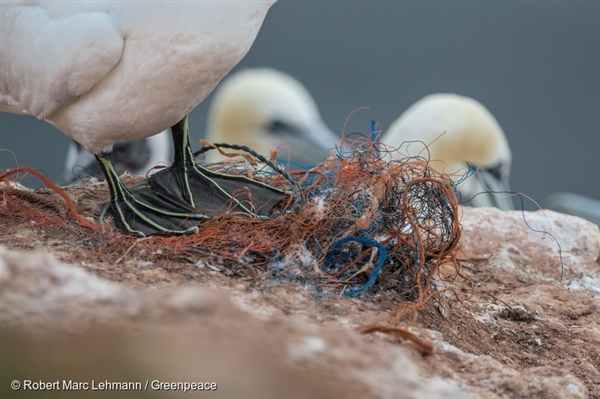Every Single Piece of Plastic Ever Made Still Exists – Here’s the Story
ENVIRONMENT, 9 Jan 2017
Diego Gonzaga | Greenpeace – TRANSCEND Media Service
6 Jan 2017 – From the moment we wake up in the morning and brush our teeth, to when we watch TV at the end of the day, plastic is all around us. So much so that it can be hard to imagine leaving the supermarket without at least one item that isn’t in a plastic container.
It hasn’t always been like this. In fact, there are people alive today that were born in an almost plastic-free world. Imagine going to the beach and not finding a single piece of washed up plastic trash.
What, in the course of history, caused such a change?
There are a few stories of what drove the demand for modern plastics. One version is that, in the second half of the 19th century, companies in the billiard ball industry realised they needed a substitute for ivory. By then, humans were consuming at least one million pounds of the material each year, and newspapers were reporting that elephants would soon become extinct if that pace continued.
And so the race to come up with a new material began. Over the course of several decades, chemists from Europe and US searched for solutions. After years of trial and error, they discovered plastic as we know it today, and by the beginning of the 20th century, people could buy hair combs and clothes with buttons that were not made of ivory.
Even with this scientific development, there were still no plastic bags flying around the cities, or fish being caught up in plastic rings. So, what triggered this explosion of plastic in our lives?
Two important factors pushed manufacturers to embrace this substance. First was the development of mass production assembly lines. Before that, factories required a lot of labour to manufacture even a single product, making plastic prohibitively time consuming.
The second factor was World War II. The material was used in many ways, from bazooka barrels to aircraft components, and between 1939 and 1945, the production of plastic grew by almost four times. With the end of the war, plastic companies needed to keep making a profit, so they had to switch from military vehicles to Barbie dolls. Plastic was so cheap, everyone could afford it: plastic containers, plastic furniture, plastic toys. And that’s when the material gained widespread traction.
But what was a solution before is a problem now. Because plastic lasts for so long, every single piece of plastic ever made still exists, and will continue existing for at least 500 years. To put that in context, if Leonardo da Vinci had drunk water from a plastic bottle when he was painting the Mona Lisa, that bottle would not have fully decomposed yet.
Everyday, more and more plastic keeps being produced, used and thrown away. In countries where disposable cups are made of plastic, for example, it may take only seconds for one to leave the package, be used, and end up in a trash can. So much plastic is being consumed that there is an area bigger than France of throw-away plastic swirling at all depths in the North Pacific Ocean. It has become so ubiquitous that birds are using it to build their nests.
And it’s not just the amount of plastic being produced. Everything related to plastic is damaging the planet, from the impact of extracting the fossil fuels used to produce plastic, to the health effects of the toxins it releases into the environment when it is burned, to the devastating impact on sea life.
There is something you can do about it. Reducing the amount of plastic you use might seem difficult, but it’s simpler than you think. You can make a difference by many ways, from simple actions like bringing your own bag to the grocery store, to avoiding plastic cutlery and products containing microbeads. What is important is to be conscious about what you are consuming and how it is affecting not only your life and your surroundings, but the whole planet and its many magnificent species, large and small.
httpv://www.youtube.com/watch?v=eg-E1FtjaxY
____________________________________
Diego Gonzaga is a social media strategist for the Americas at Greenpeace USA
Go to Original – greenpeace.org
DISCLAIMER: The statements, views and opinions expressed in pieces republished here are solely those of the authors and do not necessarily represent those of TMS. In accordance with title 17 U.S.C. section 107, this material is distributed without profit to those who have expressed a prior interest in receiving the included information for research and educational purposes. TMS has no affiliation whatsoever with the originator of this article nor is TMS endorsed or sponsored by the originator. “GO TO ORIGINAL” links are provided as a convenience to our readers and allow for verification of authenticity. However, as originating pages are often updated by their originating host sites, the versions posted may not match the versions our readers view when clicking the “GO TO ORIGINAL” links. This site contains copyrighted material the use of which has not always been specifically authorized by the copyright owner. We are making such material available in our efforts to advance understanding of environmental, political, human rights, economic, democracy, scientific, and social justice issues, etc. We believe this constitutes a ‘fair use’ of any such copyrighted material as provided for in section 107 of the US Copyright Law. In accordance with Title 17 U.S.C. Section 107, the material on this site is distributed without profit to those who have expressed a prior interest in receiving the included information for research and educational purposes. For more information go to: http://www.law.cornell.edu/uscode/17/107.shtml. If you wish to use copyrighted material from this site for purposes of your own that go beyond ‘fair use’, you must obtain permission from the copyright owner.



